FLIPPED CLASSROOM
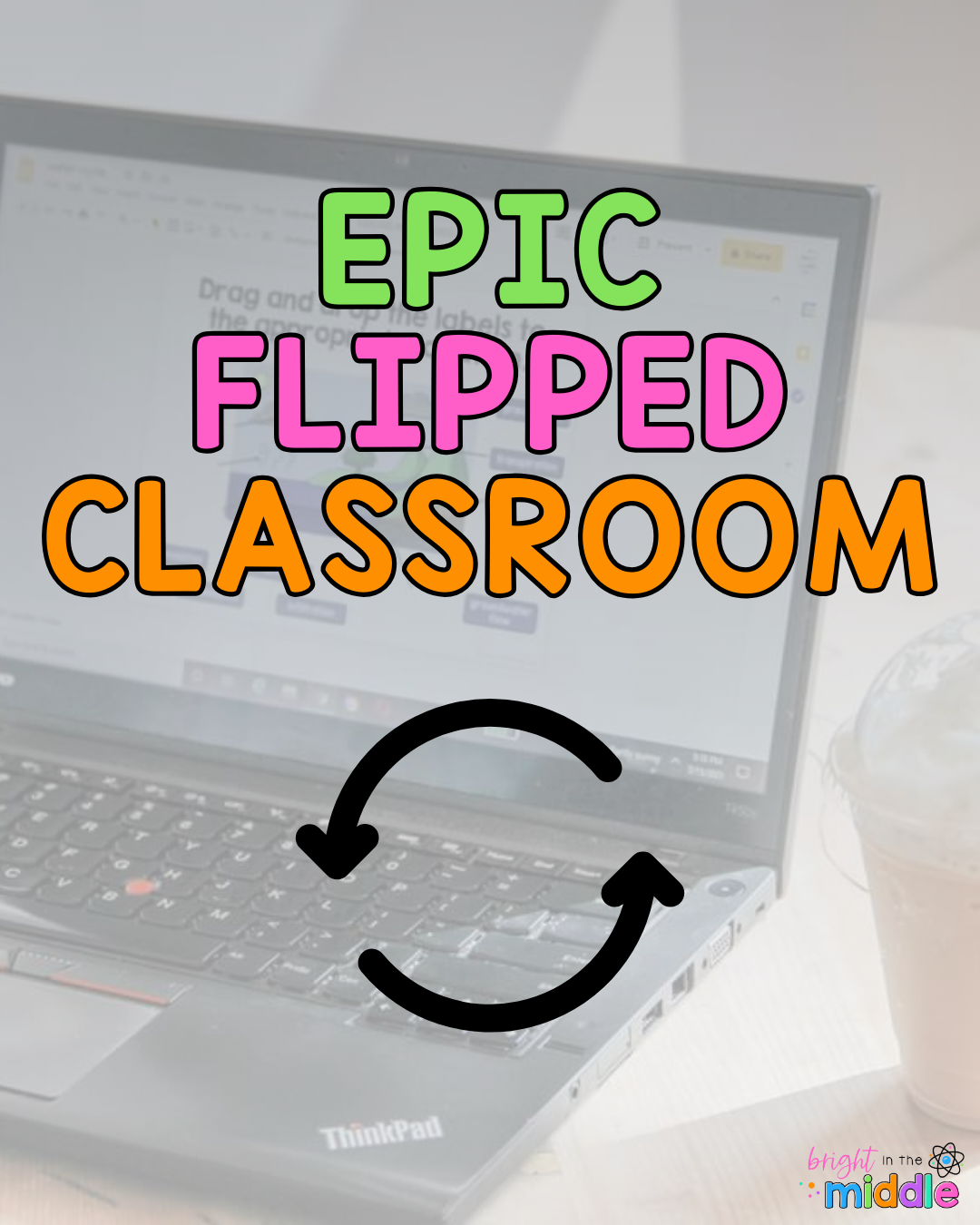
What is a flipped classroom?
So, what exactly is a flipped classroom?
It’s an instructional strategy that teachers can use to make sure that students have individualized learning by learning content outside of class via videos and other methods so that they can engage in activities related to the content in the classroom.
I’ve had successful experiences with a flipped-classroom approach in both my math and science classes in middle school. I have also “spun” my classroom, which is what I call the in-class approach to flipping the classroom.
Flipped Classroom Approach
If you decide to flip your classroom, of course, with any new addition to your classroom, it is best to begin at the beginning of the year, but I say, it’s never too late! So, I’d start as soon as you feel that it’s best for your class and your students. To get started, you do need to have a few items in place.
- You need to decide what your students will be completing at home and what students will be doing in class. When I first began this process, I created videos on YouTube that my students could watch at home (These are ancient, so don’t judge!). They were created by the “2014-2016 me”, so they aren’t the best quality, but guess what, my students learned, so that’s all that mattered! When I first began teaching, I noticed right away that notes took up too much time. Even guided notes could be an issue. With a variety of different learning styles and personalities, there were so many questions. Some students were moving fast, and others were moving slow. By taking notes at home, students could go at their own pace, and be ready to apply the information the next day in class. You could also use interactive lessons!
- You need to let the students and the parents know how your class will proceed. I wrote a letter to my students’ parents/guardians that made them aware of what homework would look like (taking notes at home), what classwork would look like (review and activities), what the flipped classroom would require of them, what a flipped classroom would require of their child, and what would happen if students still did not understand the content.
- Well, if your students are completing notes at home, you need some extra activities in class. I’ve listed some ideas in the next section!
Flipped Classroom Activities
Flipped Classroom Math
There are SO many options for activities when you flip your classroom because you save SO much time taking notes and actually teaching the material, so you have the whole class time to apply the information. I usually would begin every class period with a 5-10 minute review and also answer any burning questions, but then we would begin activities.
Here are some ideas on what you could do to help your students apply the information. It really depends on the subject, but there are many resources available. I highly suggest collaborative work, but there is a time and a place for individual work as well!
- use models and props to solve problems: I could write a blog post for each activity that my students completed in math class. There are so many engaging ideas to keep students excited while applying their new knowledge.

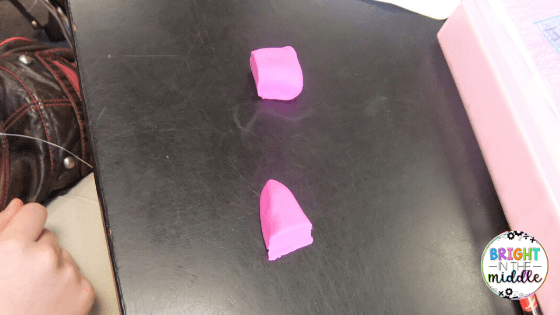

- self-checking cut-and-glue activities: I’m a huge fan of cut-and-glue activities, and yes, in middle school. I mean, they love it! Having something physical to cut out is great, and when there are only a limited number of “choices”, students realize if they make a mistake right away because if their answer is not there to cut out, they probably should recheck their work.
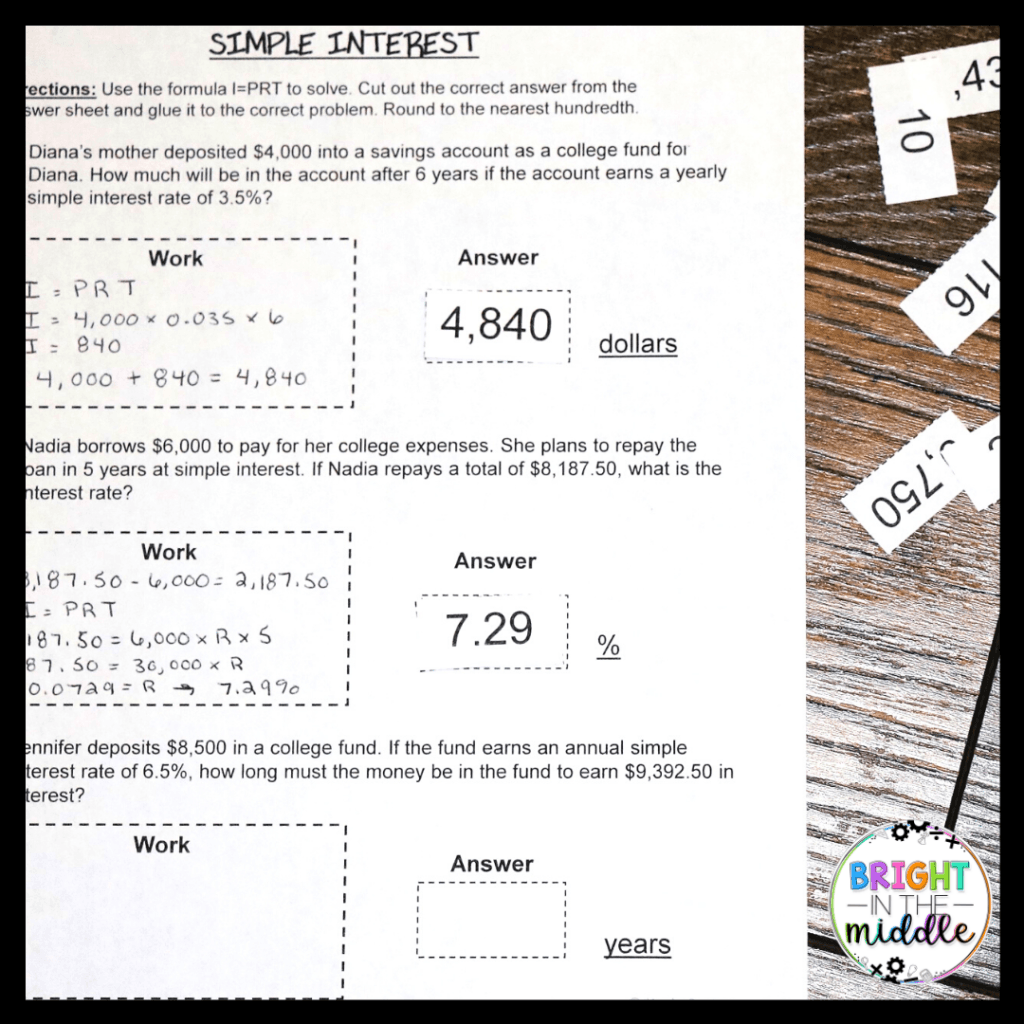
- task cards – If you have been following me at all, you know that I am a huge fan of task cards. They are an engaging way to address the standards and, if you have the right set, you can address all levels of bloom taxonomy. They are also great for differentiation! In this blog post, I discuss how you can use task cards in your classroom to make it awesome!
- real-life application – There are so many examples of real-life application activities that can be used in a flipped classroom. For example, with the activity “Going Shopping”, students create their own sales paper, and are given a real-life scenario. With that scenario, they will have to created shopping lists, finding the subtotal, sales tax, and total costs.
- games – This is another teacher and student favorite. There are so many games that you can find online. My students love Kahoot!, but there are also games such as I Have, Who Has, Memory, and The Common Mistake Challenge. Games are a MUST!
- writing prompts – Ok, so maybe this isn’t my favorite to be honest, but man, isn’t writing super important for vocabulary and increasing student understanding in math, YES! There is definitely a time and a place for writing in the classroom. It really should occur almost every day in some form or fashion.
- class discussions – This is a simple activity that can have powerful results. Socratic seminars are neat and are worth looking into.
- using technology – Technology is on the rise in the classroom. There are many online resources that are useful. There are activities using QR codes, different apps, videos, and more. The possibilities are endless!
Flipped Classroom Science
Just as with math, there are SO many different activities that you will have more time for if you flip your classroom. If you’ve ever thought that you didn’t have enough time to do a lot of labs, here is your chance! Here are some activities that you can do in a flipped classroom for science.
- labs: There is a lab that you can find for every subject in science. I pretty much love all of them, and I hope to write many blog posts to help you implement labs in your classroom. Some easy ones that are easy to look up include Water Cycle in a Bag and the Cheek Cell Lab.
- using and creating models: This is always a great idea, especially if you can use food! Your students can create models for cells, atoms and elements, the moon phases, the atmosphere, the layers of the skin, and so much more!
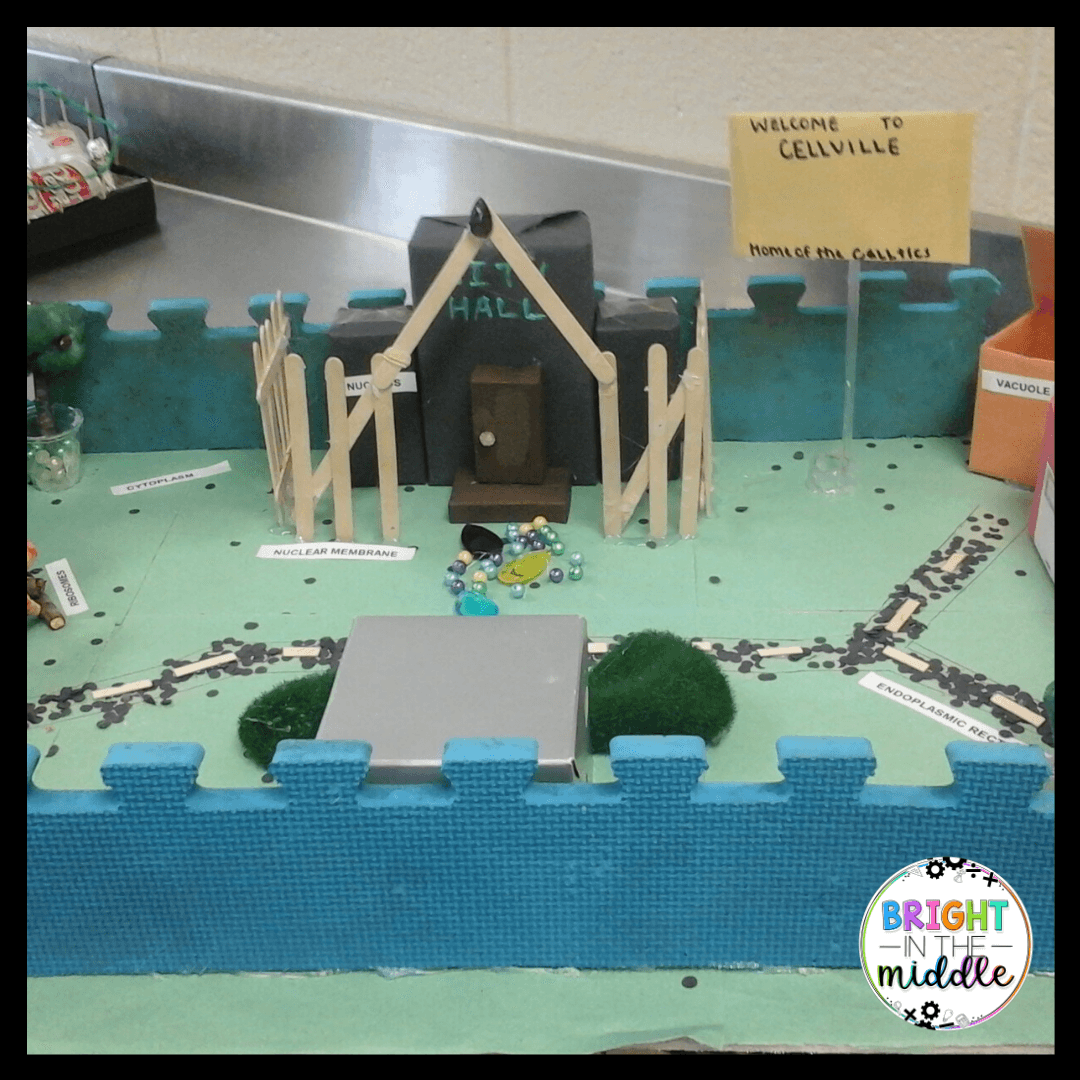
- task cards – Yes, I know. I love task cards. They are great for all subjects!
- cut-and-glue sorts: Concept sorting is a research-based strategy that helps students understand topics in greater detail. What not do a cut-and-glue activity to include in their interactive notebooks, and yes, you can still have an interactive notebook in a flipped classroom!

- writing prompts – As with every class, writing is important. Writing prompts are great strategy to use in a flipped classroom.
- games – In science, there are so many games that you can play. You can, of course, play my favorite Kahoot, Jeopardy games, trasketball, and so much more!
- online simulations – PhET simulations is a great go-to in order to dive deeper into content.
- citizen science – If you have never looked into citizen science, I highly suggest you do so. It’s a great way to help students understand REAL SCIENCE in action. SciStarter is a great place to begin.
I truly could go on and on!
In Class Flipped Classroom
There are so many flipped classroom benefits, but along with the pros, there are cons. My biggest hurdles with a flipped classroom were that students were not completing there notes at home, either by choice or lack of internet access. This is a requirement to have a successful flipped classroom.
You can give the option to have select students work on completing their notes at the beginning of class to catch up, or they could visit the library before school begins, but if you have a lot of students that are not completing their assignments outside of class, this can become an issue. This is why I decided to have an IN-CLASS “FLIPPED” CLASSROOM, or as I called it, “spinning the classroom”.
This flipped classroom modification may not be feasible for everyone, but it is not impossible. Fortunately, I was able to write a grant to get a set of Chromebooks for my classroom, and through Donor’s Choose, I was able to obtain a class set of headphones.
When I “spun” my classroom, students would arrive in my classroom, and after our welcome routine, they would work on getting their notes from a video. When I created the videos, I tried to make them short and to the point, so that students could maximize their time, and write down the most essential information, and then, we could spend the majority of the time applying that information. I absolutely loved this strategy for teaching. Students were able to participate in another proven research-based strategy, writing things down, and then we had time to take the information to the next level.
This was great for students who worked quickly. If students finished completing their notes, I provided links to different websites related to the lesson that students could go ahead and explore the content deeper while waiting for the rest of the class. I also created flashcards using Quizlet through my class website that they could review while waiting.
So, what about the students who require a little differentiation? I would print the notes for them, and they would still watch the video, and highlight important aspects.
There are so many tips and tricks to making a flipped classroom or an in-class flipped classroom work successfully! Feel free to reach out if you have any questions!
99 Engaging Strategies for Middle School Science
A flipped classroom is just one way to engage your students in science material. Check out these 99 strategies that can be used in your science classrooms to make sure that your students are engaged 100% of the time!

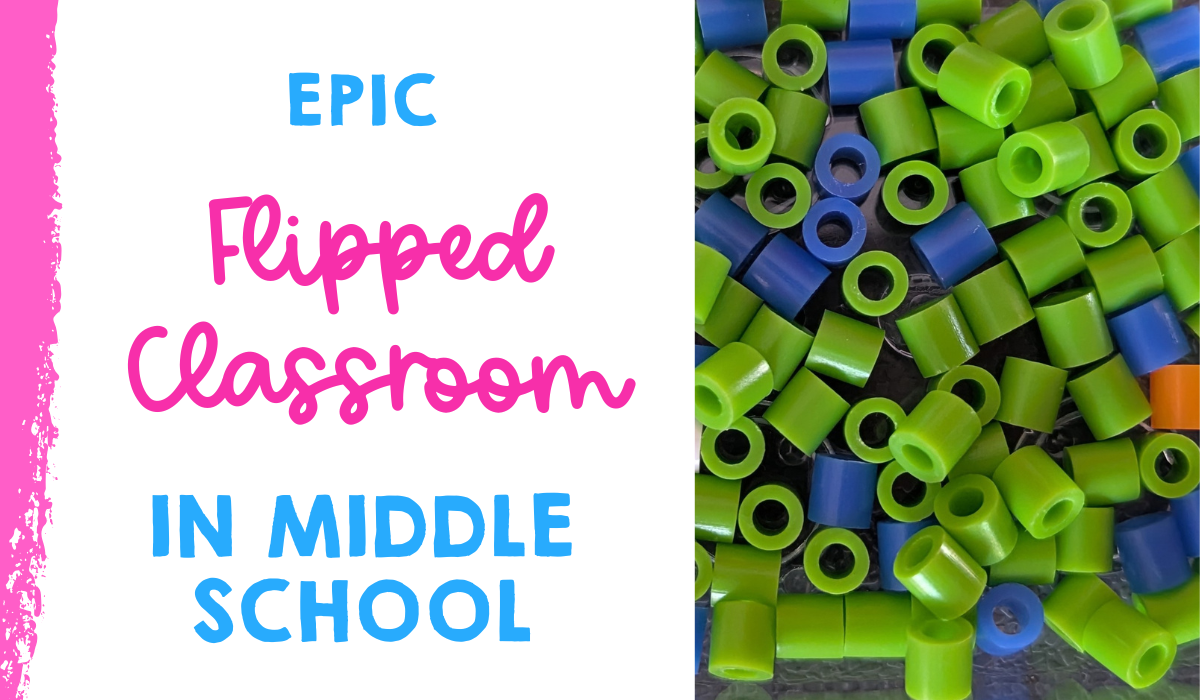
Yes! This is exactly what I want to do this year!
I am trying a flipped classroom model for math. What do you think is the ideal maximum length of time for 8th graders to view a math video as a homework assignment?
Hi Benjamin,
It depends on what you are trying to do. I want to make sure my students only spend about 15-20 minutes on their work at home, so I try to keep the videos between 5-10 minutes if I want them to write the notes or complete some problems as well. Hope this helps, and good luck!